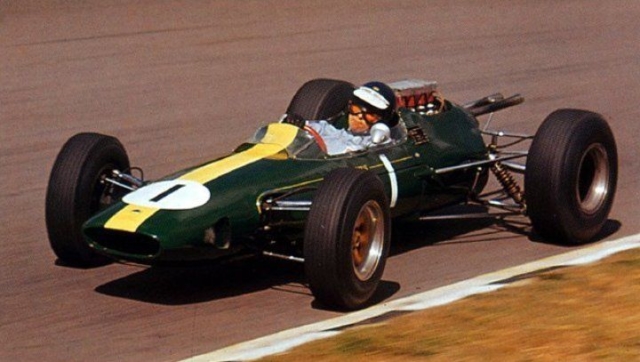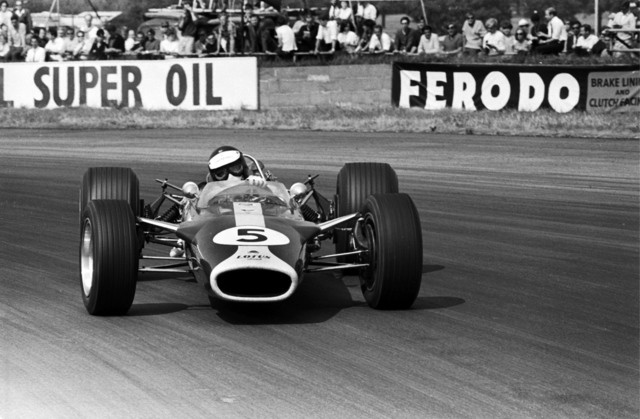There are those who look back to the past with rose-tinted glasses, back to a time when racetracks weren’t lined with barricades, people smoked and drank freely and the drivers’ helmets exposed their huge mustaches. Of course, these times were dangerous and racers died more often than today, but there was a joie de vivre in the paddock and the whole scene seemed to be more fun and lively. Like the racing of the time, the cars were simple and uncomplicated, with no wings, no safety measures — not even many cars had seatbelts! And yet, these men had the guts to race wheel-to-wheel at incredible speeds.
The car in focus here has to be Jim Clark’s Lotus-Climax. The nasally roar of his V8 is symbolic of the times, when Britain became dominant thanks to their understanding of aerodynamics and weight distribution. Prior to the sixties, Formula One was all about power, and grunty engines from Maserati or Mercedes seemed to cross the finish line first.
At the turn of the decade, the surplus of British aeronautical engineers after the second World War went to work for British motorsports, and used their knowledge to make better handling cars. Now, it was about the development of the chassis and the suspension, not the mere grunt an engine could produce.
Onboard with Clark, it’s not hard to understand why he was such a dominant driver. Always relaxed and precise behind the wheel, Clark made it look easy even when sliding on narrow, treaded tires. His Climax V8 made somewhere in the vicinity of 220 horsepower and yet the engine appears to have much more than that.
Pursued by his swashbuckling teammate Graham Hill, who is chased by Ferrari’s John Surtees, the pack at the front drive smoothly and yet, the technology of the days meant the cars slid, hopped, and looked very demanding to drive. Though modern standards of racing are safer, they’re also a little sterile in comparison. Looking back with this color footage, the sixties seemed so much friendlier, joyous and exciting.























